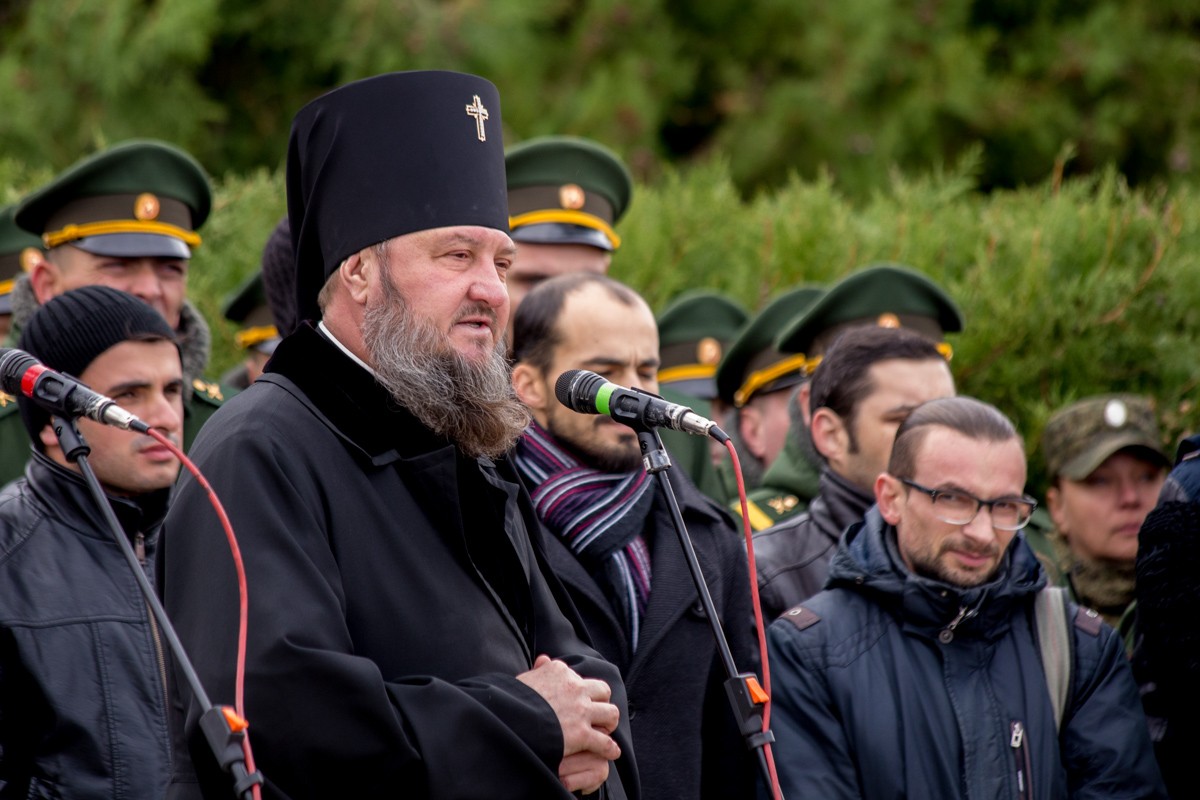Tiraspol, 30 October. /Novosti Pridnestrovya/. A rally was held today in the vicinity of the former Tiraspol Fortress, where the remains of 800 people executed in the 1930s are buried in the common grave. The rally was dedicated to the 80th anniversary of the Great Purge.
Pridnestrovian President Vadim Krasnoselsky, Chairman of the Supreme Council Alexander Scherba, Deputy Chairman of the Government Alexey Tsurakn, officials, clergy, members of the Tiraspol Association of Political Repression Victims took part in the mourning ceremony.
It had been decided to rebury the remains of 436 victims discovered this summer in the territory of the fortress.
In 1937-1938 the so-called "enemies of the Soviet people" were executed in the fortress. Over 5,000 people were killed in Tiraspol during the entire period of repression. Most of them were inhabitants of towns and villages of the Moldovan ASSR, who were arrested on false charges or accused of dissent. For decades people were unaware of the fate of their guiltlessly convicted relatives, and many of them still do not know where they are buried.
The president thanked the searchers, historians and volunteers who had done a great deal conducting forensic analysis and preparing the remains for reburial.
"The political repressions are one of the most tragic pages in the history of the Soviet people, and this tragedy must not be forgotten, lest such events should not recur. I would not want to politicise this process and seek the perpetrators of this tragedy. The most important thing is memory. People of different nationalities and professions are buried in these graves. The last thought of the convicted probably was 'For what?' People died and did not understand: they were loyal to their homeland; they served the Soviet state, but someone considered them to be public enemies and executed them, putting them at the edge of the grave. I am grateful that the PMR does not forget this page of history," said the president.
On 15 October 1937 the life of Vilgelm Vais was tragically cut short in the Tiraspol Fortress, but his relatives had known nothing about his fate for 80 years.
A great deal of archive work has made it possible to identify most of the 436 people whose remains were discovered this summer. Among them are workers, servicemen, heads of enterprises and institutions, statesmen, representatives of various religious denominations. Vilgelm Vais was one of them.
His grandson, Vladimir Kuzmin, came today from Korzhovo village, Rybnitsa District, to take part in the reburial ceremony.
"Unlike my grandsons, I had no opportunity to say this word — grandpa. We did not know where our grandpa had been killed. We even wanted to ask for help [Russia's] Wait for Me TV show. And now, within only 120 kilometres from home, I can say: 'Grandpa, hello!'" said Kuzmin, expressing special words of gratitude to the volunteers working to perpetuate the memory of victims.
According to the Supreme Council member, Igor Buga, this work will continue.
"We'll continue searching and rebury with honours all who are still there. And their souls will finally rest in peace," said Buga.
The clergymen of three traditional denominations conducted a burial service, after which the country's leadership, the relatives of the oppressed and citizens laid flowers at the Memorial to the Victims of Political Repression and took part in the ceremony of consecration and laying of foundation stone for a church in the honour of the new martyrs and confessors of the Russian Orthodox Church.































